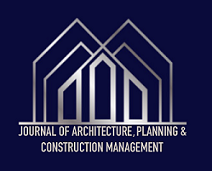About the Journal

The Journal of Architecture, Planning and Construction Management (JAPCM) is a biannual, peer-reviewed academic journal owned and managed by the Kulliyyah of Architecture and Environmental Design (KAED), International Islamic University Malaysia (IIUM). The journal is published under the authority of IIUM Press, the official publishing arm of the university.
All rights to the journal, including copyright, are held by IIUM Press. Articles published in JAPCM are made available under the terms of the Creative Commons Attribution-NonCommercial 4.0 International License (CC BY-NC 4.0). This license permits authors and readers to share, copy, and adapt the work for non-commercial purposes, provided proper attribution is given to the original source.
JAPCM is Currently Indexed by:
MyCite (Malaysian Citation Index)
Google Scholar
Aim and Scope
The Journal of Architecture, Planning and Construction Management (JAPCM) is dedicated to advancing knowledge and scholarship in the built environment. The journal seeks to publish original, high-quality research that integrates both theoretical inquiry and practical application, with the goal of fostering innovation, critical discourse, and sustainable development in the field.
JAPCM covers five core disciplines within the built environment: Architecture, Landscape Architecture, Quantity Surveying, Urban and Regional Planning, and Applied Arts and Design—which encompasses Industrial Design and Interior Design. The journal welcomes diverse contributions that explore design innovation, methodological advancements, professional practice, and interdisciplinary approaches.
By providing an open-access platform, JAPCM aims to engage academics, professionals, and policymakers in meaningful dialogue, promoting research that not only advances theory but also responds to real-world challenges in shaping the built environment.
Ethical Statement:
The Journal of Architecture, Planning and Construction Management (JAPCM) upholds the highest standards of integrity and transparency in publishing, in line with COPE principles.
Authors must submit only original, unpublished work, free from plagiarism or falsification. All sources must be acknowledged, and copyright permissions obtained where required. Authorship is limited to those who made significant contributions, and conflicts of interest must be disclosed. Use of generative AI is allowed only for language improvement, with disclosure; AI cannot be credited as an author or used to generate figures, except when explicitly part of the research method. Reviewers must maintain confidentiality, provide fair and constructive feedback, and avoid conflicts of interest. Editors ensure unbiased, double-blind peer review and act on ethical concerns promptly.
JAPCM treats misconduct seriously, with measures including retraction or reporting to institutions, to preserve trust in scholarly publishing.
Double Blind Peer Review Process
At the Journal of Architecture, Planning and Construction Management (JAPCM), we are committed to maintaining the highest standards of blind-review integrity. Once a manuscript passes an initial suitability evaluation by the secretariat, it is subjected to a rigorous double-blind peer review process by two independent experts. During this review, the authors' identities are anonymized to ensure impartiality. The ultimate decision regarding publication, however, is made by the Chief Editor.
Publication Charges:
There are no charges for submission of a manuscript as well as no charges for article processing or publication.
Issues:
JAPCM is published biannually, with the first issue released by June and the second by November each year. Submissions are accepted year-round, and the average processing time for each paper is approximately two months from the date of submission acknowledgment. Upon acceptance of a manuscript, the author can request a Letter of Acceptance (LoA), which will be promptly provided.
Privacy Statement:
The names and email addresses entered in this journal site will be used exclusively for the stated purposes of this journal and will not be made available for any other purpose or to any other party.
Disclaimer:
All claims expressed in this article are solely those of the authors and do not necessarily represent those of their affiliated organizations, or those of the publisher, the editors and the reviewers. Any product that may be evaluated in this article, or claim that may be made by its manufacturer, is not guaranteed or endorsed by the publisher.








